The economy slowed more than expected in Q1 according to the 3rd and final revision to . Nominal GDP was revised down from 3.4% to 3.2%, while the price index (inflation) was revised higher, from 3.7% to 3.8%.
Real (inflation adjusted) GDP is calculated by subtracting the price index from nominal GDP and therefore Q1 real GDP fell -0.5% in Q1 (worse than the previous estimate of -0.2%).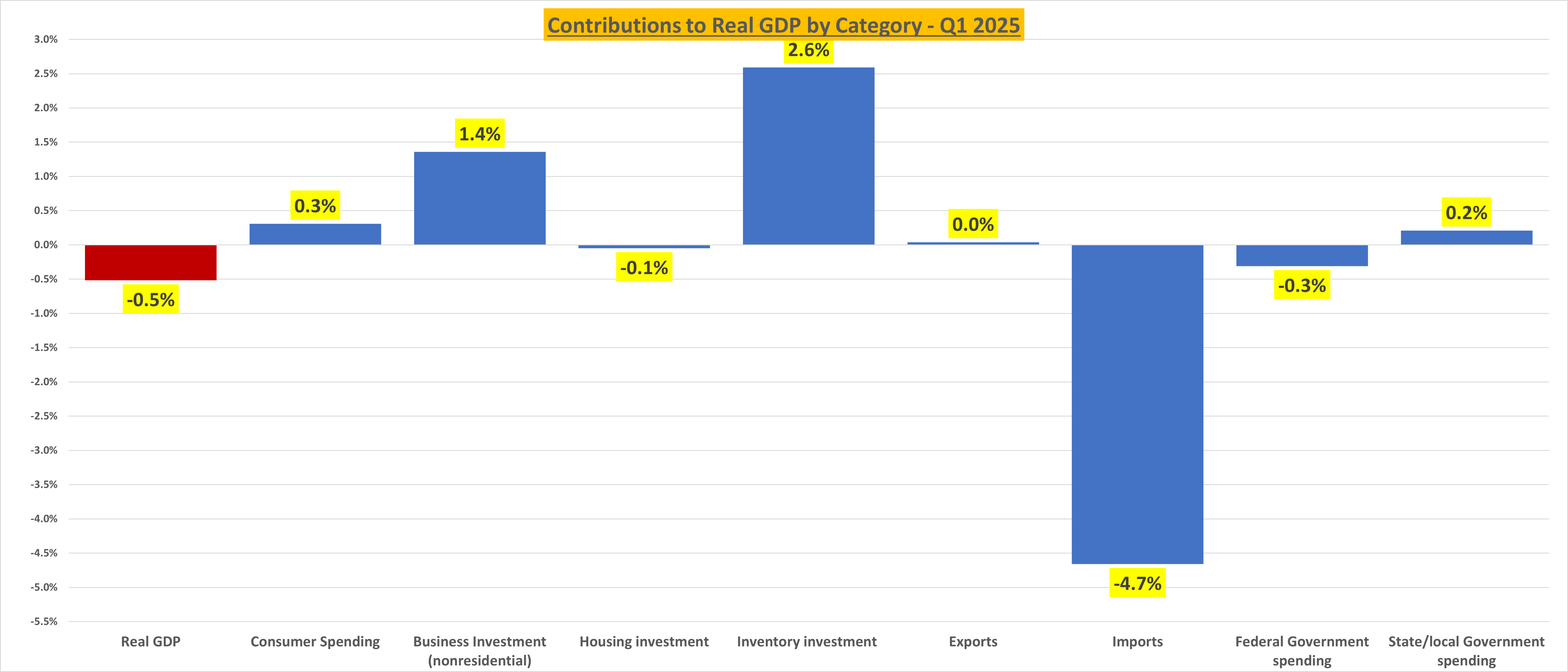
The market has clearly looked past the weak data, being that the and are trading at record highs, contributing the weakness to the surge in imports ahead of the tariff deadlines. While this is true, imports subtracted 4.7% from GDP in Q1, it masks the underlying weakness in .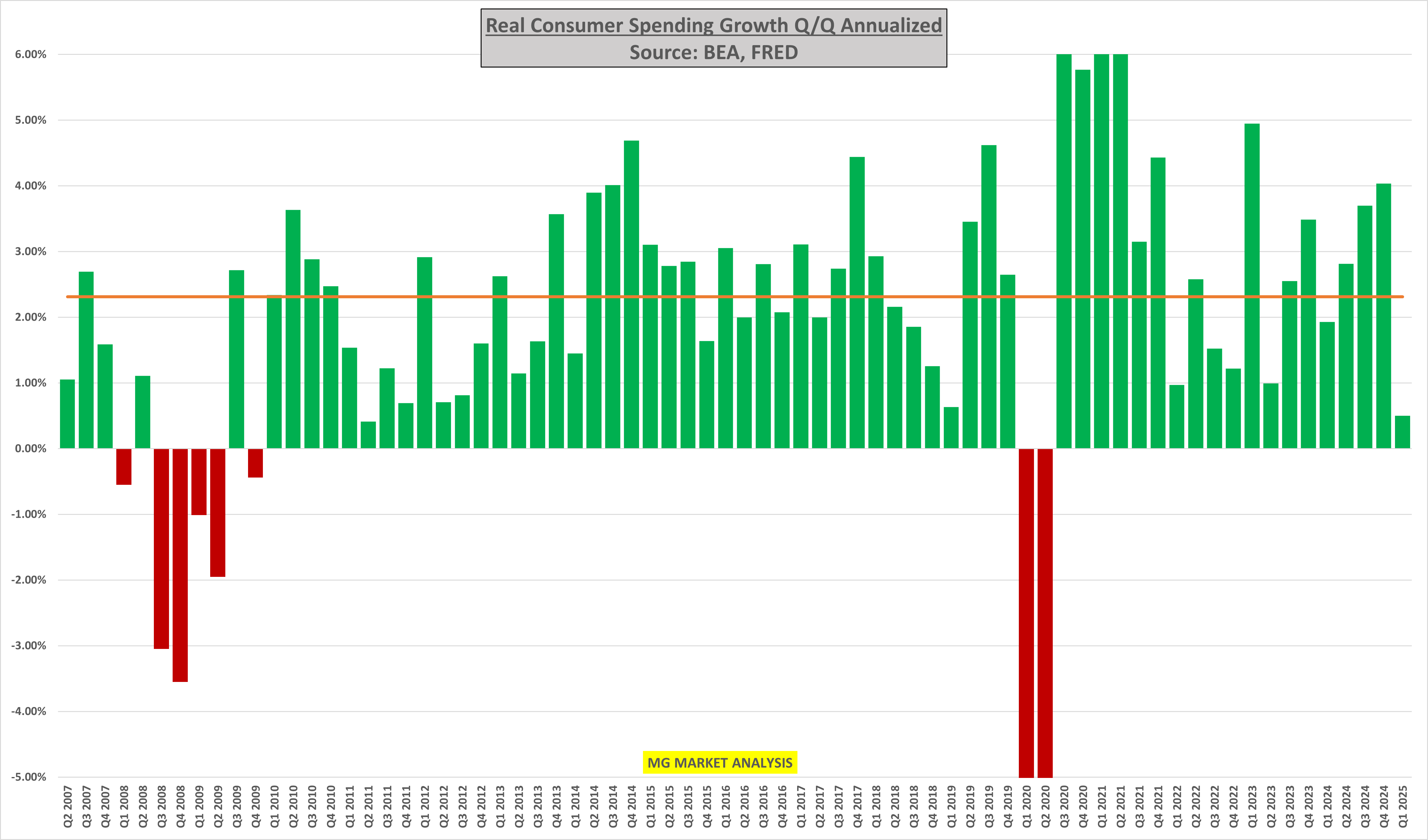
Real personal spending was revised lower by about $30 billion, for a compounded annual growth rate of 0.5%. This was the slowest quarter for the consumer since the economy was in recession back in 2020 and 2008.
Consumer spending in Q2 is trending at a 1.5% pace of growth so far, but we still have to wait for data from June, so the final number could be quite different.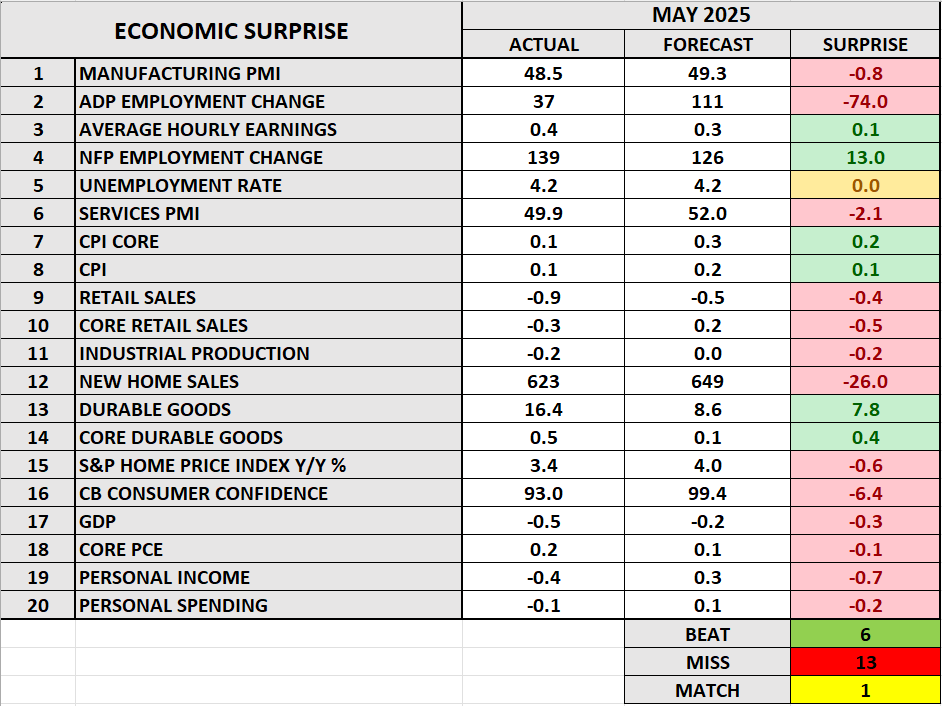
All economic data for the month of May has now been reported, and the results were the weakest for 2025 so far. With only 6 data points beating street estimates, while 13 missed.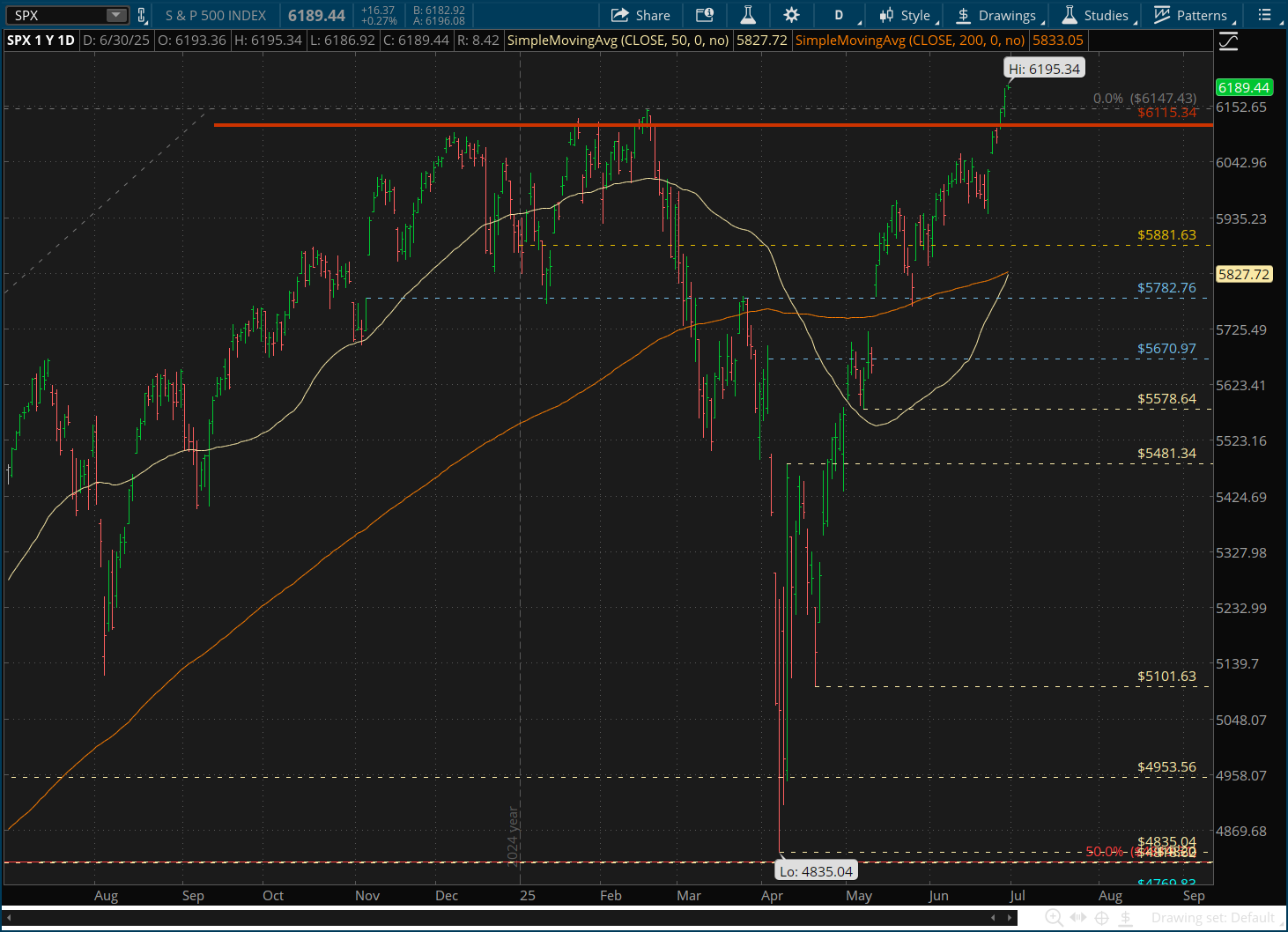
With both the S&P 500 and the Nasdaq making record highs last week, investors appear to be looking past the data and anticipating the effects of AI on profit margins.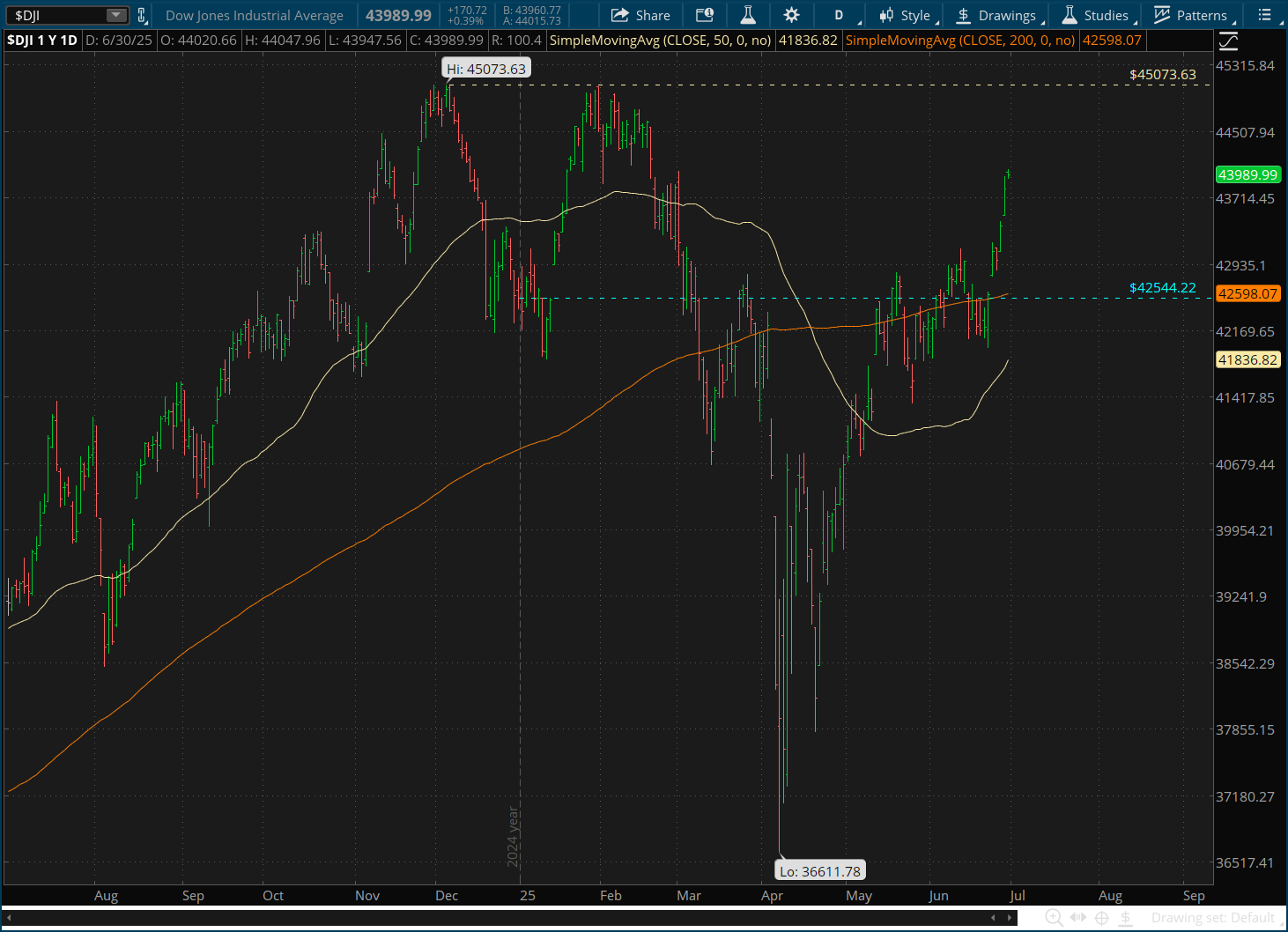
The last major resistance level left for the large cap indices appears to be the prior record high in the around 45k which has to be breached and still about 3% away.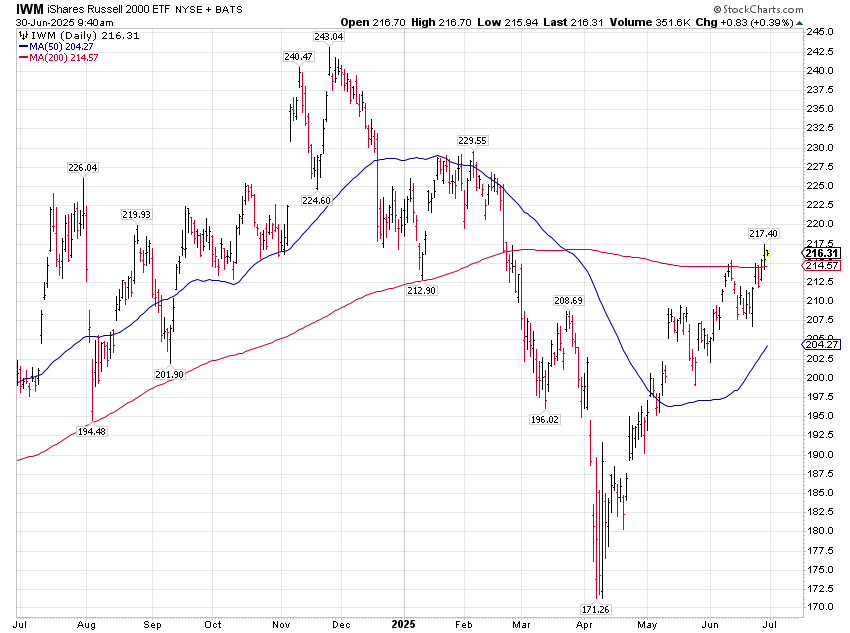
US small-cap companies continue to lag as they struggle with the higher costs of capital, but they cleared a major hurdle last week. Pushing above the 200 day moving average for the first time since February. Next upside targets for the would be around $230 and prior record high.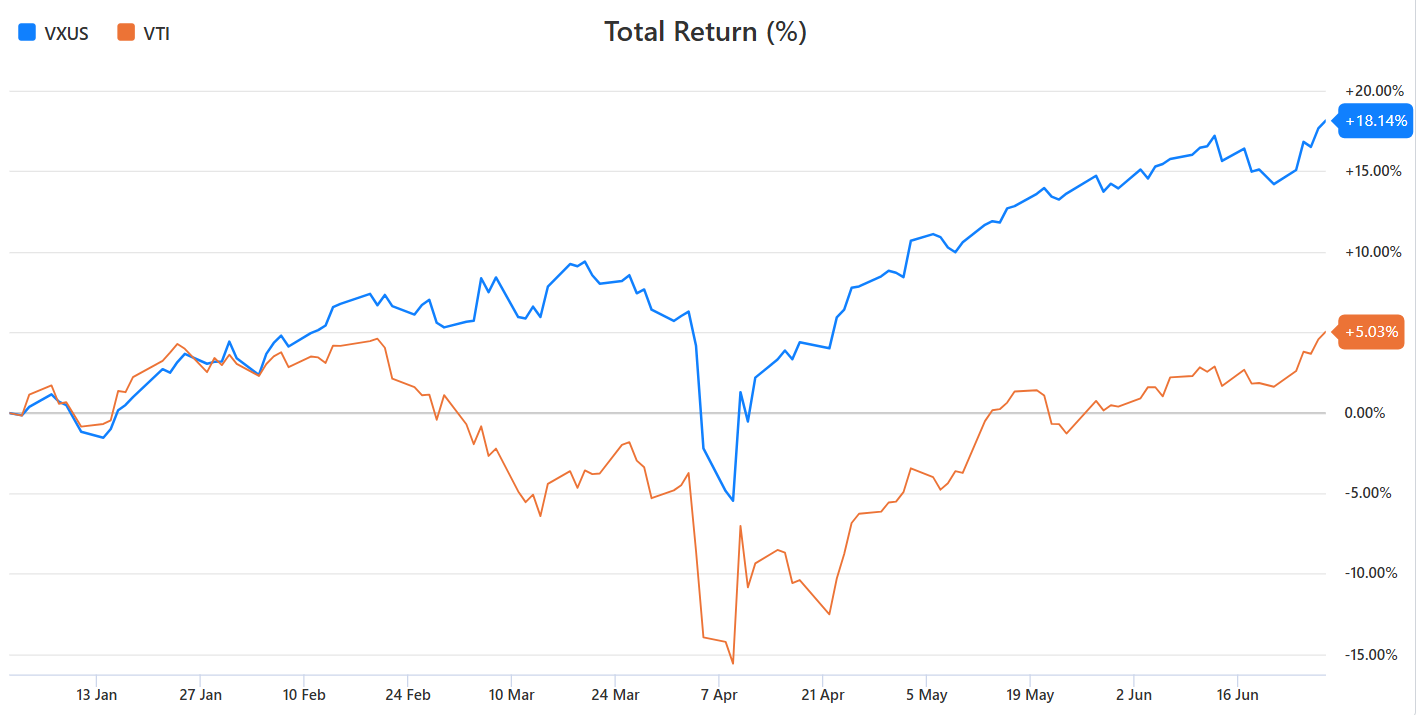
Despite the enthusiasm rushing back to US equities, they still lag international stocks by a significant margin in 2025.
Total international () is up 18% year to date with Total US () is up 5%.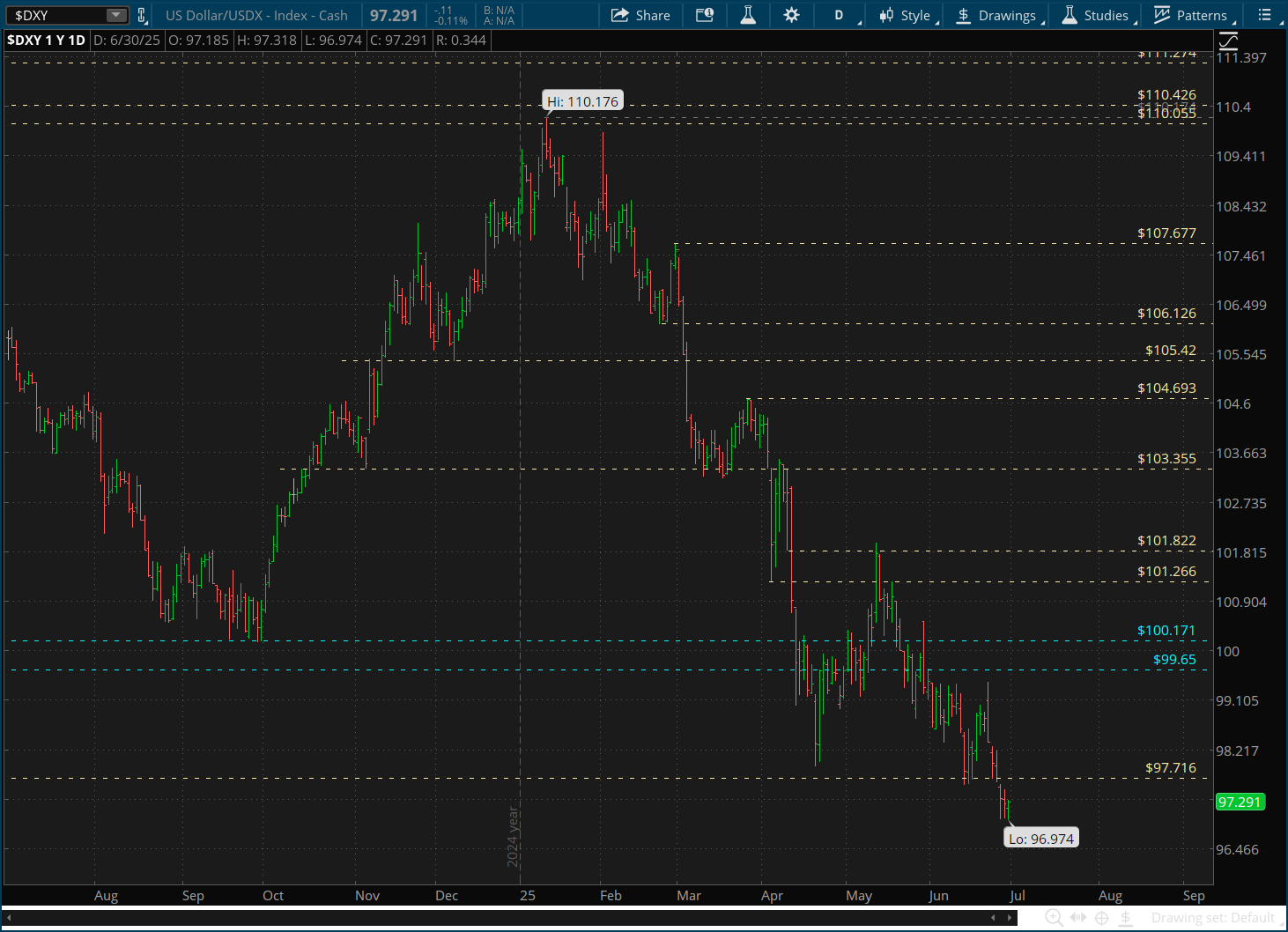
Of course, much of the outperformance is due to the sharp decline in the . Which can’t seem to hold above the prior years lows (blue horizontal lows), with no visible support levels until $95.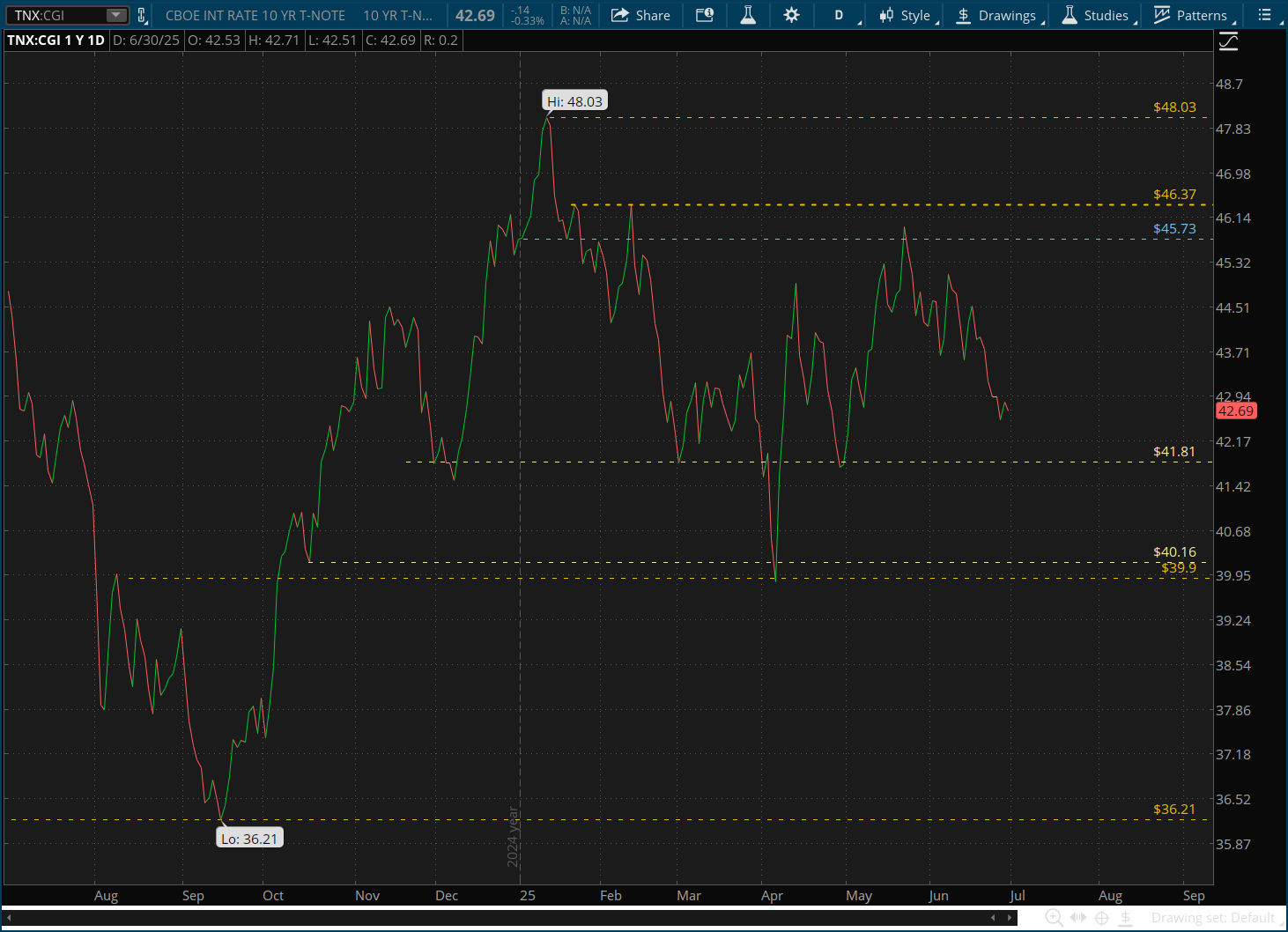
have cooled off a bit, with the failing to hold above the key 4.5% area. It appears to be headed to the prior support zone around 4.18% next.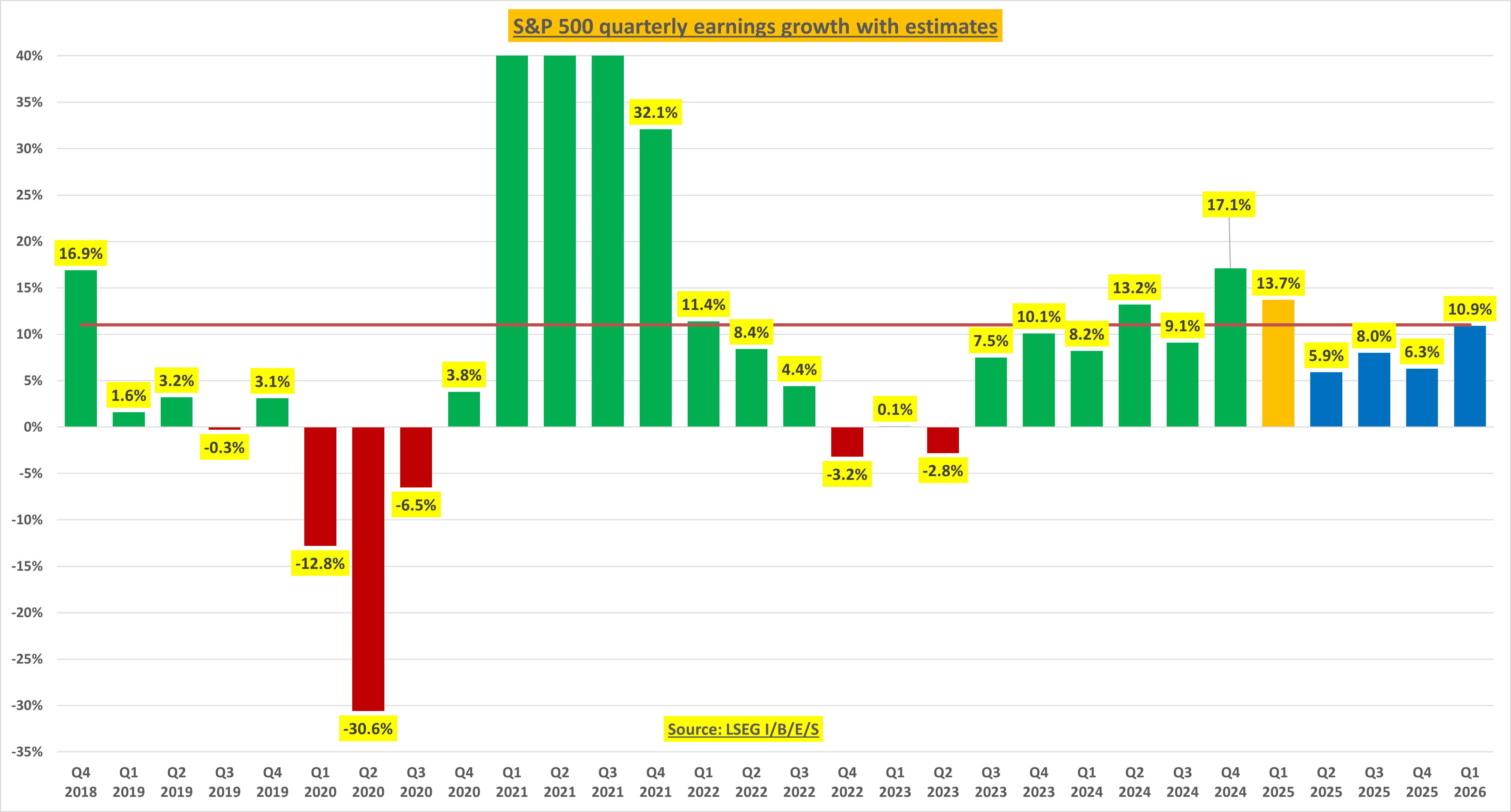
Earnings grew 13.7% in Q1 despite the economic slowdown, so I guess its no surprise that investors are getting complacent about the downside risks. Looking ahead, the expected earnings growth rate is set to slowdown for the next few quarters, but still pretty solid.
With a forward PE of 23x and an equity risk premium of 0%, a lot of positive news is already price in, but the momentum is clearly in the bulls favor.



